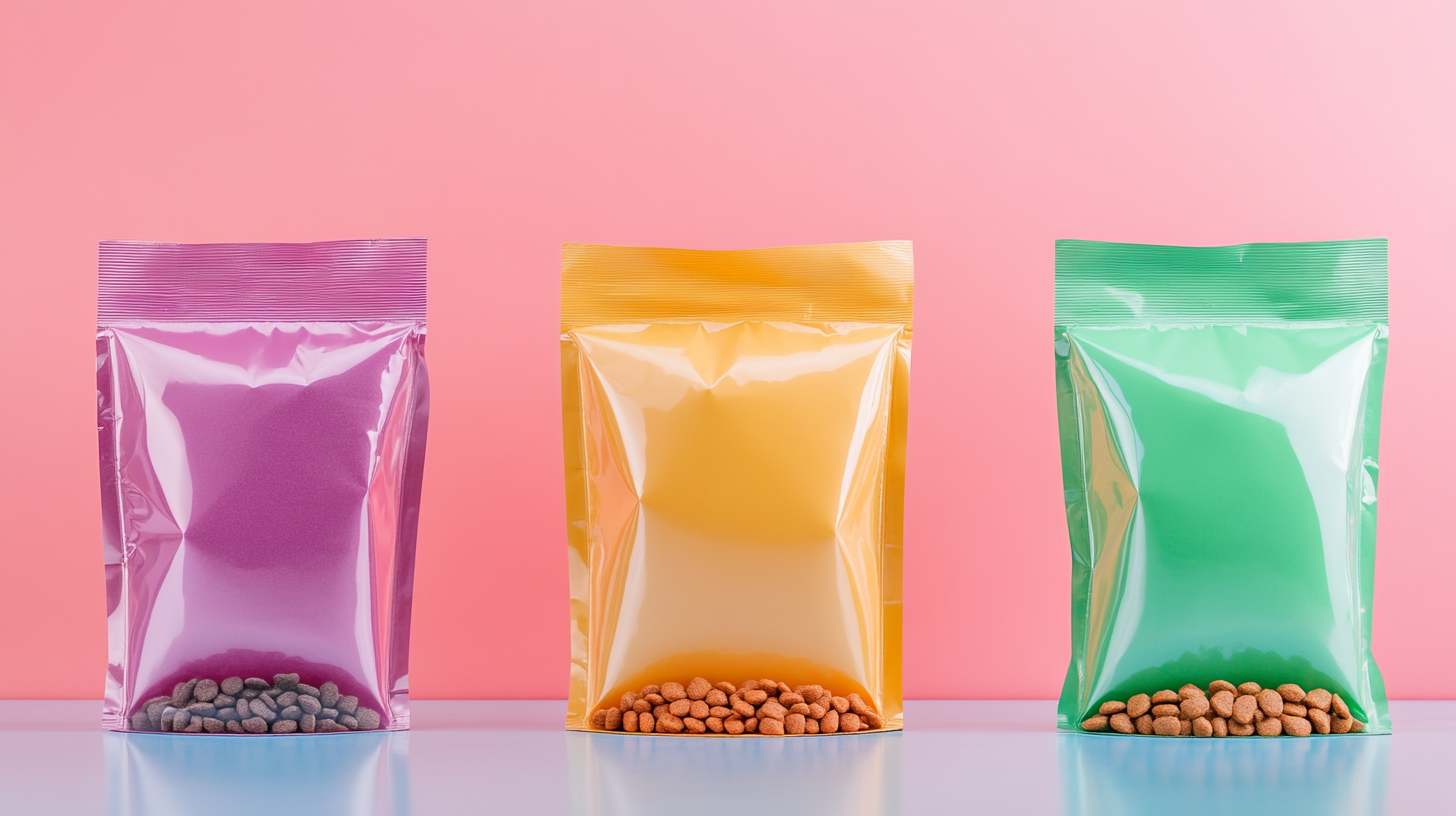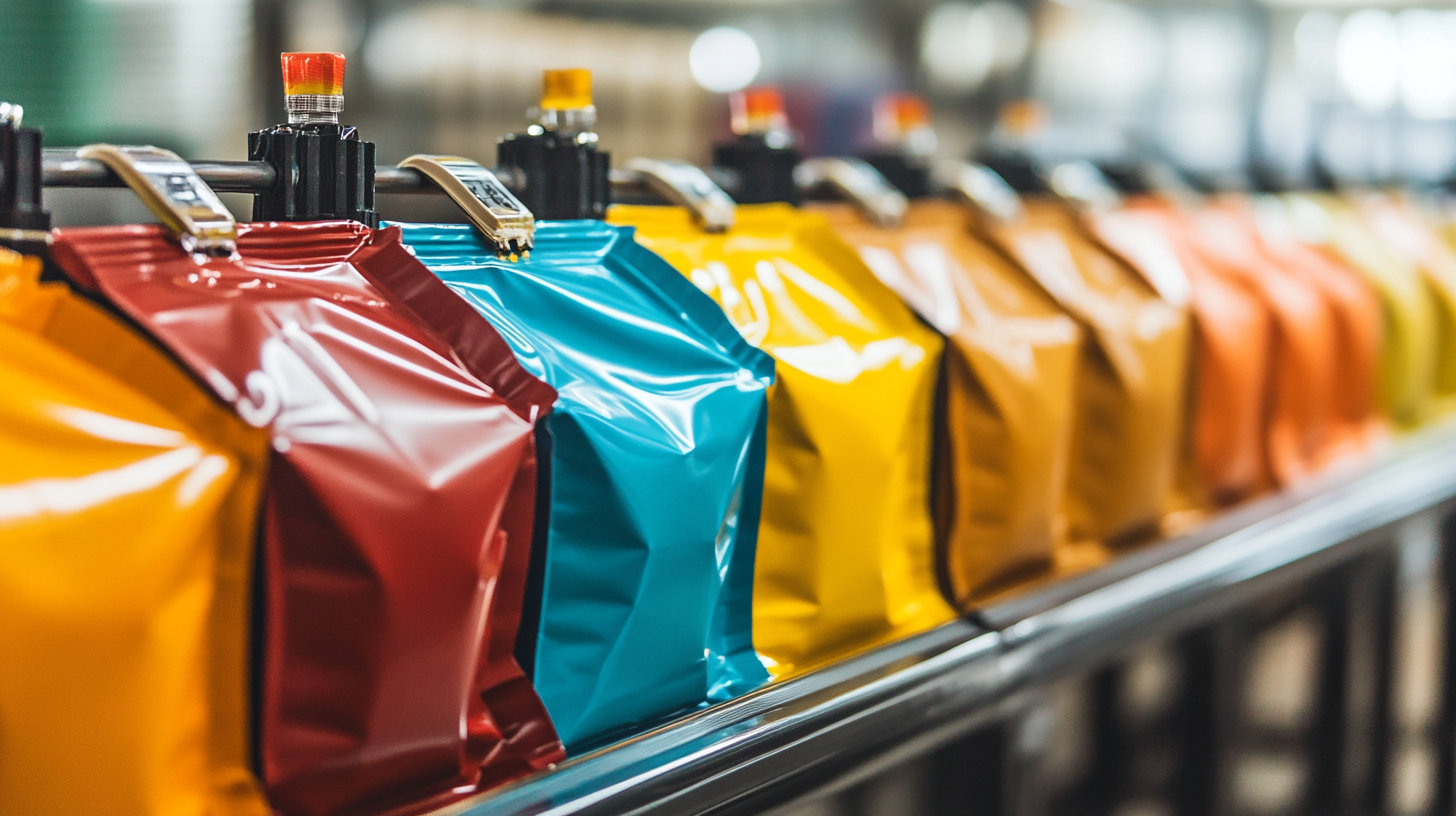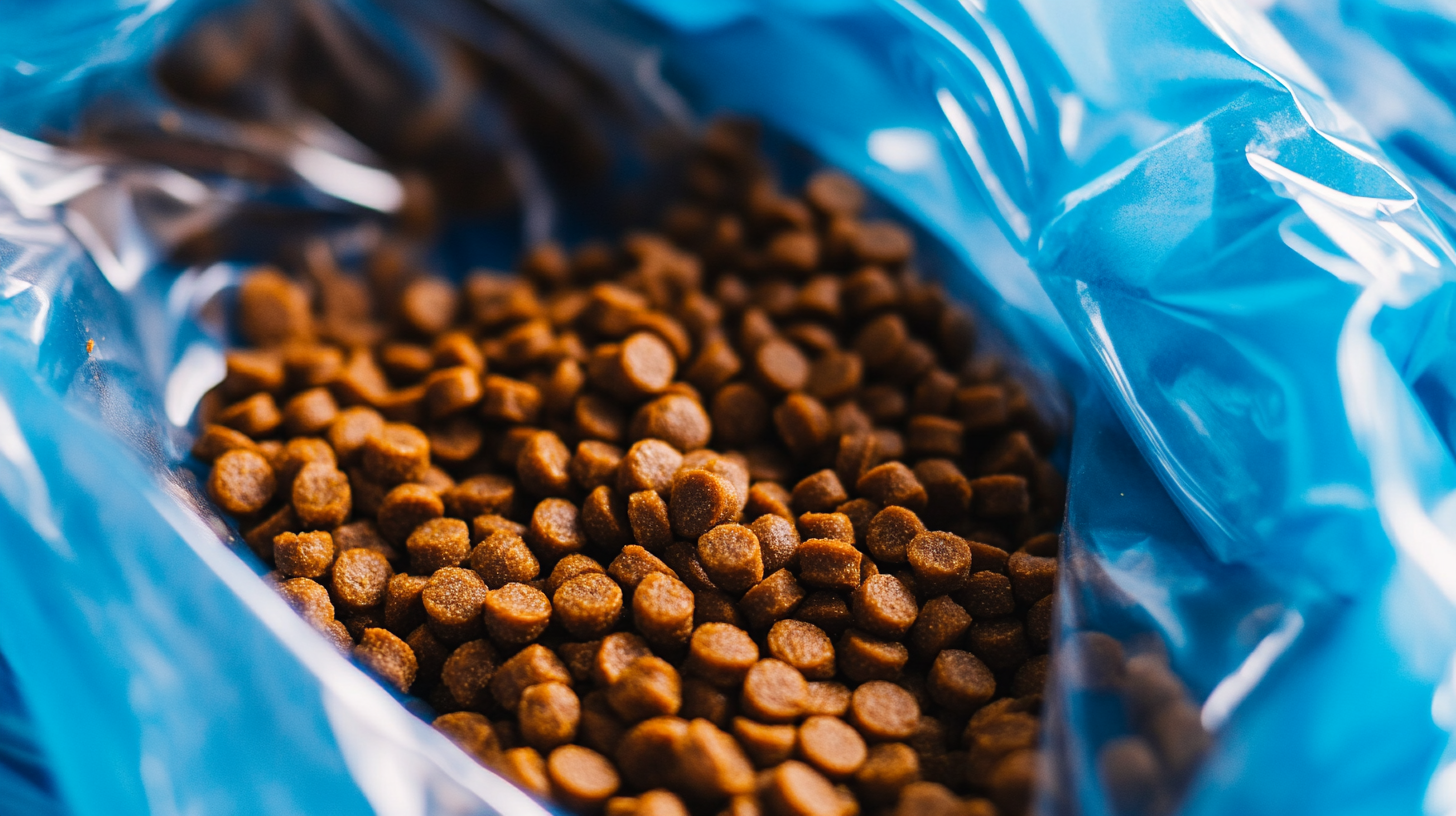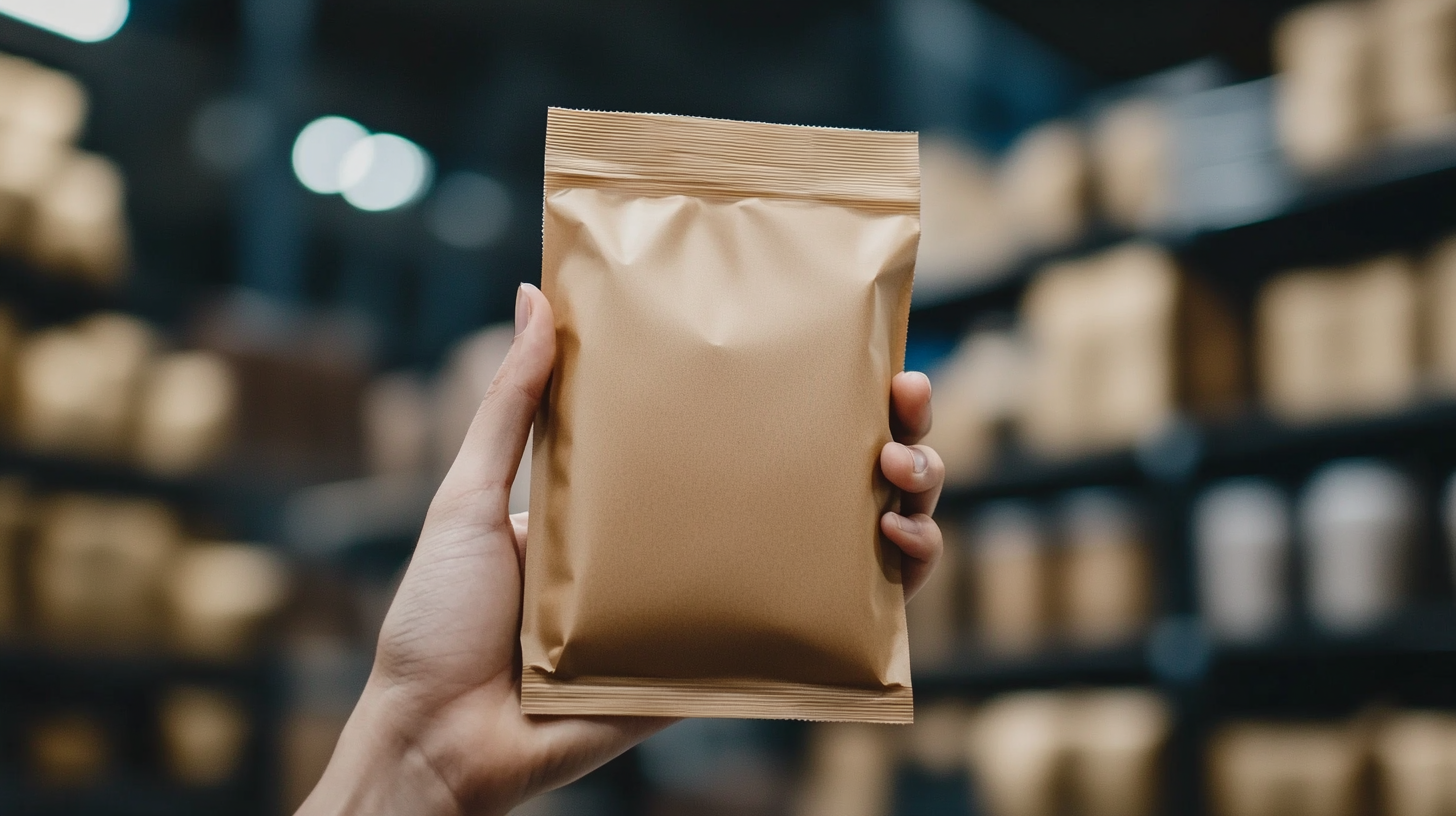Unlocking Quality: The Definitive Guide to Sourcing Pet Food Spout Packaging Bags Globally
As the global pet care market continues to expand, with a projected value exceeding $200 billion by 2025, the demand for high-quality packaging solutions is more critical than ever. Among these, the Pet Food Spout Packaging Bag has gained popularity for its convenience and functionality, catering to the evolving preferences of pet owners. According to a recent report by Grand View Research, the flexible packaging segment, which includes spout bags, is forecasted to grow at a compound annual growth rate (CAGR) of 4.4% from 2021 to 2028, reflecting an increasing recognition of the efficiency and sustainability these bags offer in the pet food industry.
Additionally, the rise of e-commerce in the pet food sector, which has surged by 40% since the onset of the pandemic, has further emphasized the need for innovative packaging solutions. The Pet Food Spout Packaging Bag not only ensures product freshness and extends shelf life but also enhances customer experience through user-friendly features such as resealability and easy pouring. This guide will explore various strategies for sourcing these essential packaging solutions on a global scale, equipping manufacturers and retailers with the knowledge to meet consumer demands while maintaining product quality and sustainability.

Understanding the Global Market Trends for Pet Food Packaging Solutions
In recent years, the global pet food packaging market has witnessed significant growth, primarily driven by changing consumer preferences and increasing demand for sustainable solutions. According to forecasts, the market size is expected to rise from $132.92 billion in 2025 to approximately $196.5 billion by 2032, showing a compound annual growth rate (CAGR) of 5.52%. This trend highlights the growing importance of not only pet food products but also their packaging, as consumers seek eco-friendly and innovative options. The demand for recyclable barrier packaging is capturing rising attention within the industry. With a highly fragmented market, leading manufacturers are continuously innovating to meet consumer expectations for more functional, convenient, and aesthetically pleasing packaging solutions. The focus on sustainable materials is increasingly shaping market trends, as consumers are looking for packaging that combines protection with environmental responsibility. Moreover, the pet care market is also evolving, with the market size expected to reach $304.4 billion by 2023, driven by increased spending on animal health and wellness. This correlates with the pet food ingredients market, which is projected to grow over 5.2% CAGR from 2025 to 2034, underscoring a shift toward enhanced nutrition and health benefits in pet diets. In this context, the interplay between packaging innovations and market dynamics not only influences product appeal but also reflects a wider commitment to sustainability within the pet food industry.

Key Materials and Technologies Used in Pet Food Spout Packaging Bags
The demand for pet food spout packaging bags is on the rise, driven by innovations in materials and technologies that enhance convenience and product preservation. As the pet food packaging market continues to grow, it is essential to analyze the key materials utilized, such as plastics, paper and cardboard, and the technologies that contribute to the efficiency of spout packaging designs.
Recent industry reports indicate that the global flexible packaging market, which encompasses spout packaging, is projected to reach USD 248 billion by 2026, with a compound annual growth rate (CAGR) of 4.6% from 2021. Plastic remains the dominant material used in spout packaging, accounting for approximately 60% of the market share. Its lightweight, durability, and versatility make it a preferred choice for manufacturers. Moreover, advancements in biodegradable and recyclable plastic options are increasingly aligned with consumer preferences for sustainable packaging.
In terms of application, spout packaging is particularly popular among products such as sauces, gravies, and pet food, where preserving freshness while providing ease of use is crucial. The growing trend of convenient snacking for pets has further fueled the demand for innovative packaging solutions. These technologies not only enhance usability but also ensure the integrity of the product, making spout bags an appealing choice for both consumers and manufacturers alike.

Assessing Consumer Preferences and Sustainability in Pet Food Packaging
In examining consumer preferences and sustainability in pet food packaging, it becomes clear that modern pet owners are increasingly conscious about the environmental impact of their purchasing choices. The 2024 pet food industry research report highlights significant shifts in consumer behavior, with a notable trend towards 'democratised consumption' where quality is weighed against cost, leading many to prioritize sustainability alongside affordability. This reflects a broader movement among consumers who are now more selective about the products they choose, especially when it comes to packaging materials.
As brands pivot to incorporate sustainable practices, there is a growing demand for innovative packaging solutions that not only meet the functional needs of pet food but also align with eco-conscious values. This trend isn't merely about choosing recyclable materials; it encompasses the entire lifecycle of the packaging, from sourcing and production to end-of-life disposal. As reported, companies acknowledge that adopting sustainable packaging can serve as a competitive advantage, drawing in consumers who are eager to support brands that actively contribute to environmental stewardship.
Additionally, the desire for convenience continues to drive packaging design, with consumers favoring formats that are easy to store and use. As the pet food market evolves, it is crucial for manufacturers to balance these consumer demands—offering products in sustainable packaging that enhances usability while ensuring the quality and safety of the food inside. The intersection of consumer preferences and sustainability will shape the future of pet food packaging, leading to more responsible sourcing and innovative solutions in the coming years.

Evaluating the Impact of Regulations on Pet Food Packaging Design and Safety
The pet food packaging industry is increasingly influenced by stringent regulations aimed at ensuring safety and quality. According to a report from Market Research Future, the global pet food packaging market is projected to reach USD 2.1 billion by 2025, highlighting the growing importance of compliance with safety standards. Regulatory bodies like the Food and Drug Administration (FDA) and the European Food Safety Authority (EFSA) set specific guidelines regarding the materials used in pet food packaging to prevent contamination and ensure the safety of the pet food within.
A critical aspect of pet food packaging design is the material selection, which must align with both safety regulations and market demand. For instance, an industry survey by Grand View Research indicates that flexible packaging accounts for over 50% of the market share. This popularity stems from its ability to preserve freshness and its lightweight nature, which contributes to lower transportation costs. However, with these benefits come the challenges of ensuring that materials are free from harmful substances, such as BPA and phthalates, as stipulated by safety regulations.
Furthermore, regulations dictate the labeling requirements on pet food packaging, which are vital in maintaining transparency with consumers. The Association of American Feed Control Officials (AAFCO) provides guidelines that require explicit ingredient listings and nutritional information, helping consumers make informed choices. As such, manufacturers must navigate the complex landscape of regulations while balancing design innovation and safety, ensuring not only compliance but also consumer trust in their products. With the market evolving, staying abreast of these regulatory impacts becomes essential for success in pet food packaging.
Best Practices for Sourcing High-Quality Pet Food Packaging Bags Worldwide
When it comes to sourcing high-quality pet food packaging bags, it is essential to prioritize standards that ensure the safety and integrity of the product inside. One of the best practices is to conduct thorough research on potential suppliers. Look for manufacturers with a proven track record in the industry, and consider their certifications and compliance with international safety regulations. Engaging with suppliers who adhere to recognized quality management systems can significantly enhance the reliability of your sourcing process.
Another crucial aspect is the selection of materials used in the packaging. High-quality pet food bags should be made from materials that are not only durable but also safe for food contact. Options like multi-layer laminates can provide excellent barrier properties, safeguarding the contents from moisture, oxygen, and light. This is particularly vital for preserving the freshness of pet food. Additionally, consider eco-friendly materials that appeal to environmentally conscious consumers, providing a selling point for your brand while contributing to sustainability.
Lastly, fostering strong communication with suppliers is key to a successful sourcing strategy. Regular interaction allows you to stay updated on industry trends and innovations, which can help you adapt your packaging solutions to meet evolving customer preferences. Building a collaborative relationship with your suppliers can lead to enhanced quality control and improved turnaround times, ensuring that your pet food packaging meets both your standards and your customers' expectations.

 中国
中国
